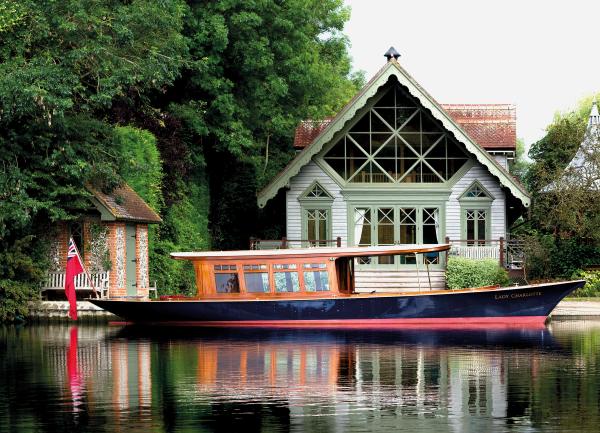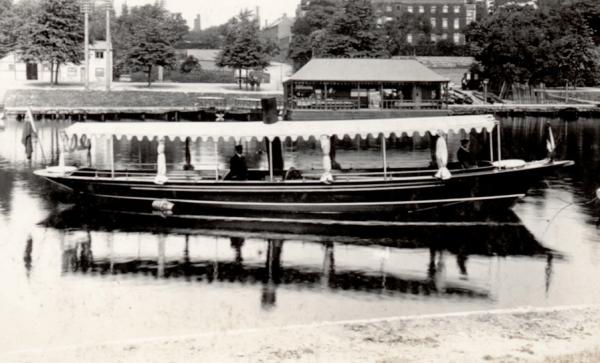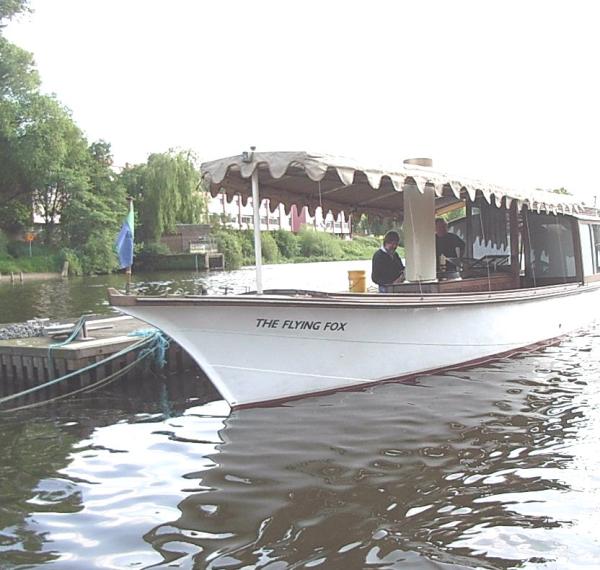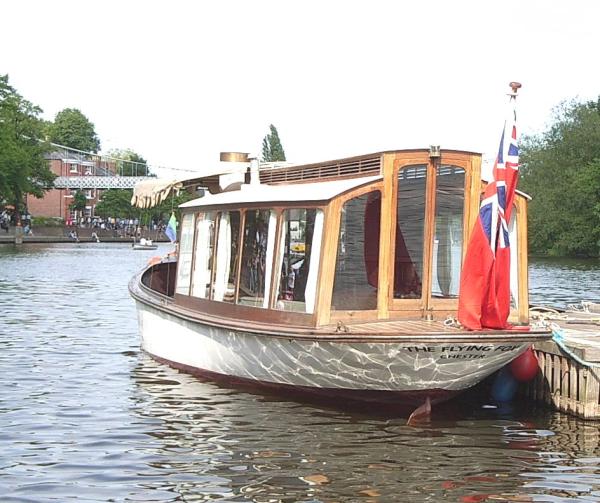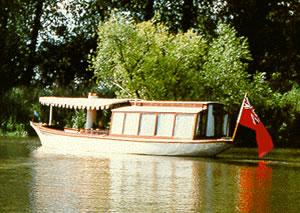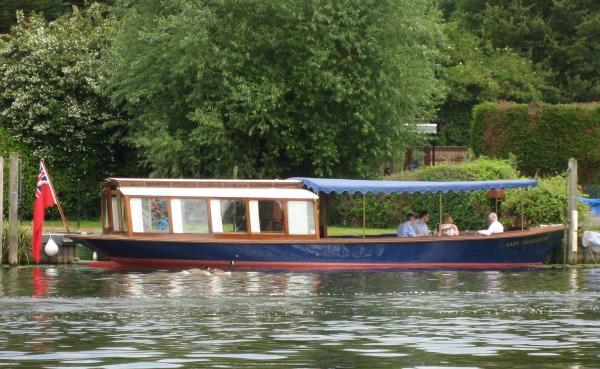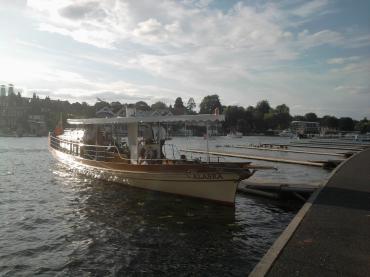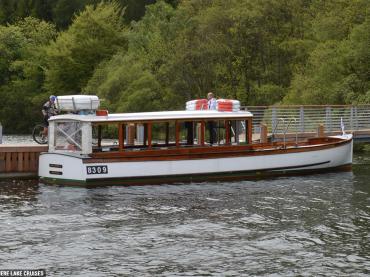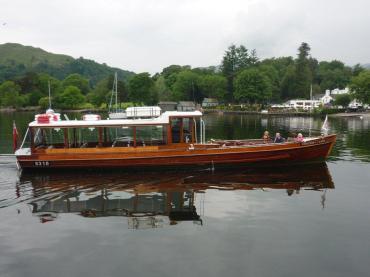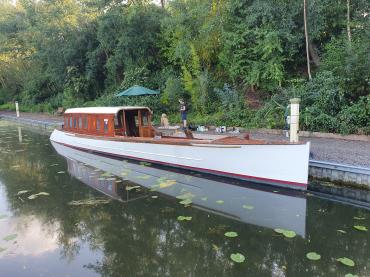

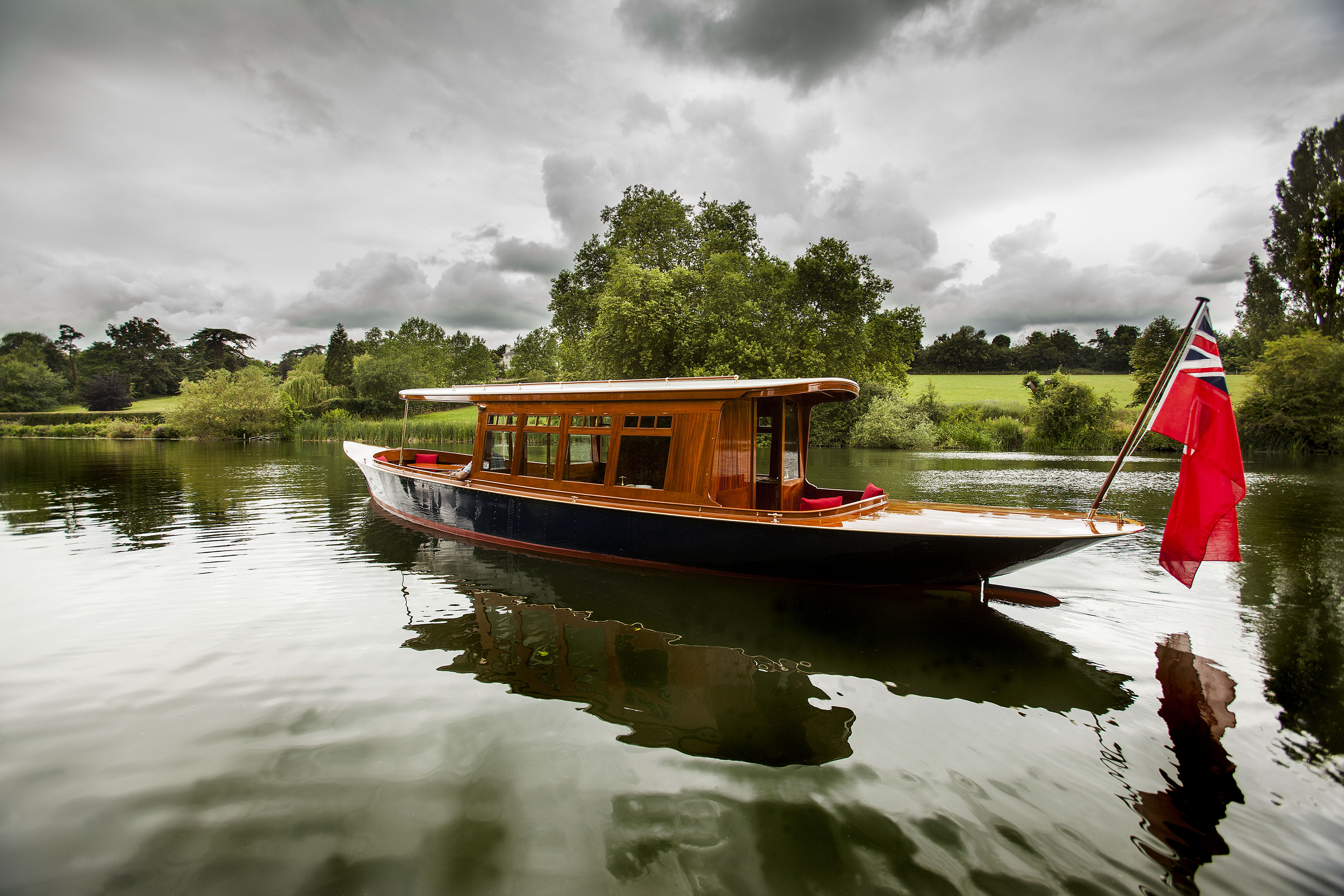
Previous names
- 2009 Flying Fox
Details
Construction
Dimensions
History
LADY CHARLOTTE was built as a saloon launch for passenger excursions on the River Dee at Chester in 1914 by J. Crichton & Co. of Saltney, Cheshire. She was originally called the FLYING FOX, named after a very successful racehorse owned by the Duke of Westminster. The Duke donated many of his winnings to charitable causes. In a letter dated 8 July 1899, describing the founding of what became the Royal Alexandra Hospital in Rhyl, he wrote: ‘With Flying Fox's powerful co-operation (and he is quite with us), I hope after his next race on the 14th to send a cheque for £10,000 to the Hospital building’. The launch’s excursions, run by Bithells Limited of Chester, took her passed Eaton Hall, the Duke’s country house.
During the First World War Eaton Hall was used as a convalescent hospital for wounded soldiers, with its main rooms becoming makeshift wards. LADY CHARLOTTE, as the FLYING FOX, was one of the boats used by the Duke of Westminster to provide trips on the River Dee to war wounded recuperating at the Hall.
Set in a large estate one mile south of the village of Eccleston in Cheshire, Eaton Hall is a magnificent, ornate Victorian building designed by Alfred Waterhouse. Building began in 1870 and it took 12 years to complete. It was the third hall of this name on the site. The first, built in the 17th century, was replaced in the early 19th century by a much larger house designed by William Porden. This in turn was replaced by the Hall completed in 1882.
During the Second World War parts of the Hall were again used as a hospital. In 1943, the Britannia Royal Naval College moved to the Hall from Dartmouth when the college there was bombed. The College moved back to Dartmouth in 1946, after which Eaton Hall was used as an officer cadet training school until the end of National Service in 1958.
Acquired by a new owner in 1974, her restoration was completed in 1994.
In the summer of 2008 it was reported that FLYING FOX was operating as a passenger vessel again where she was built, on the River Dee at Chester and in 2009, she was under new ownership, based at Henley on Thames and re-named LADY CHARLOTTE.
LADY CHARLOTTE is now in private ownership and is based on the River Thames after a restoration by Henwood & Dean of Henley on Thames. This is powered by a 12KW Electric drive.
Significance
1. What is the vessel’s ability to demonstrate history in her physical fabric?
Evidence for designs, functions, techniques, processes, styles, customs and habits or uses and associations in relation to events and people. How early, intact or rare these features are may impact on significance.
LADY CHARLOTTE is a saloon launch of steel clinker construction, with plating on wrought iron frames, held together with steel rivets. She underwent reconstruction work in 1994 when her hull was rebuilt, a saloon house was fitted aft, and a canopy was installed over the forward sitting area. She was originally powered by a petrol / paraffin engine, and following conservation, she was fitted with an inboard steam reciprocating 2-cylinder 30 horsepower engine (built by A.G. Mumford of Colchester), and a locomotive side-firing coal boiler (built by David Curwen and Peter Lewis Engineering, Devizes in 1980). Further conservation work was undertaken in 2009 with new frames welded in and three-quarters of the original plates being re-used. Concrete in her bilges was replaced with epoxy concrete. She was later converted from steam to electric and now has a 12 kw electric motor.
2. What are the vessel’s associational links for which there is no physical evidence?
Associations with people or places. Off-ship research.
LADY CHARLOTTE has strong associations to the North-West, being built by James Crichton & Co. of Saltney, Cheshire for use as a passenger launch on the River Dee. She was operated by the Dee Steamboat Co. (later Bithells Ltd of Chester) who had exclusive rights to one of her destinations, Eaton Hall, the Duke of Westminster’s country house on the River Dee. She was named after one of the Duke’s most successful racehorses, FLYING FOX. During the First World War, she was one of the vessels used to provide trips for wounded soldiers who were recuperating at the Hall. After passing through a number of owners in the Bristol and Bath area, she returned to the River Dee in 2008, once again operating as a saloon launch for passenger excursions, before being sold into private ownership where her name was changed. LADY CHARLOTTE has been recorded on the National Register of Historic Vessels since 1996 and is part of the National Historic Fleet.
3. How does the vessel’s shape or form combine and contribute to her function?
Overall aesthetic impact of the vessel, her lines, material she was built from and her setting. Does she remain in her working environment?
LADY CHARLOTTE is an elegant craft with a clipper bow, a counter stern and single deck. She was able to carry 48 passengers under a canvas awning, making her fit for river excursions. She still presents a graceful appearance and is a much admired sight when gliding through the water, with her rounded transom raked aft, raked bow, varnished wood cabin and navy blue hull. The cabin sides are finished with a gentle curve, and the roof is linked to the coamings. She is now based at a mooring on Wargrave Road at Henley on Thames, where she is engaged as a river day boat. Although no longer located in her region of origin, she continues to operate as per her intended use, carrying passengers on the river.
Source: NHS-UK team, 04 April 2017. Updated in Aug 2023 with corrections from owner.
This statement was developed as part of the Heritage Lottery funded First World War project. http://www.ww1britainssurvivingvessels.org.uk/
Key dates
-
1914
Vessel built as FLYING FOX in Saltney, Cheshire, as a passenger launch for River Dee
-
1929
Sold to private owner in Bristol
-
1945
Sold to private owner in Keynsham
-
1958
Sold to private owner in Evesham
-
1974
Acquired by a new owner and underwent restoration project, completed in 1994
-
2008
Reported to be operating as a passenger vessel on River Dee
-
2009
Under new ownership, located at Henley-on-Thames
-
2014
Restoration initiated by current owner completed
Sources
Steamboat Register: An illustrated Register of surviving steam vessels in the British Isles, Steam Boat Association of Great Britain, Edition 6, May 1994
Classic Boat: True to Edwardian Tradition, June 2015
Classic Boat: Powerboat of the year, May 2015
Classic Boat: Re-riveted and rebuilt, September 2018
Owner input, Aug 2023
Own this vessel?
If you are the owner of this vessel and would like to provide more details or updated information, please contact info@nationalhistoricships.org.uk

